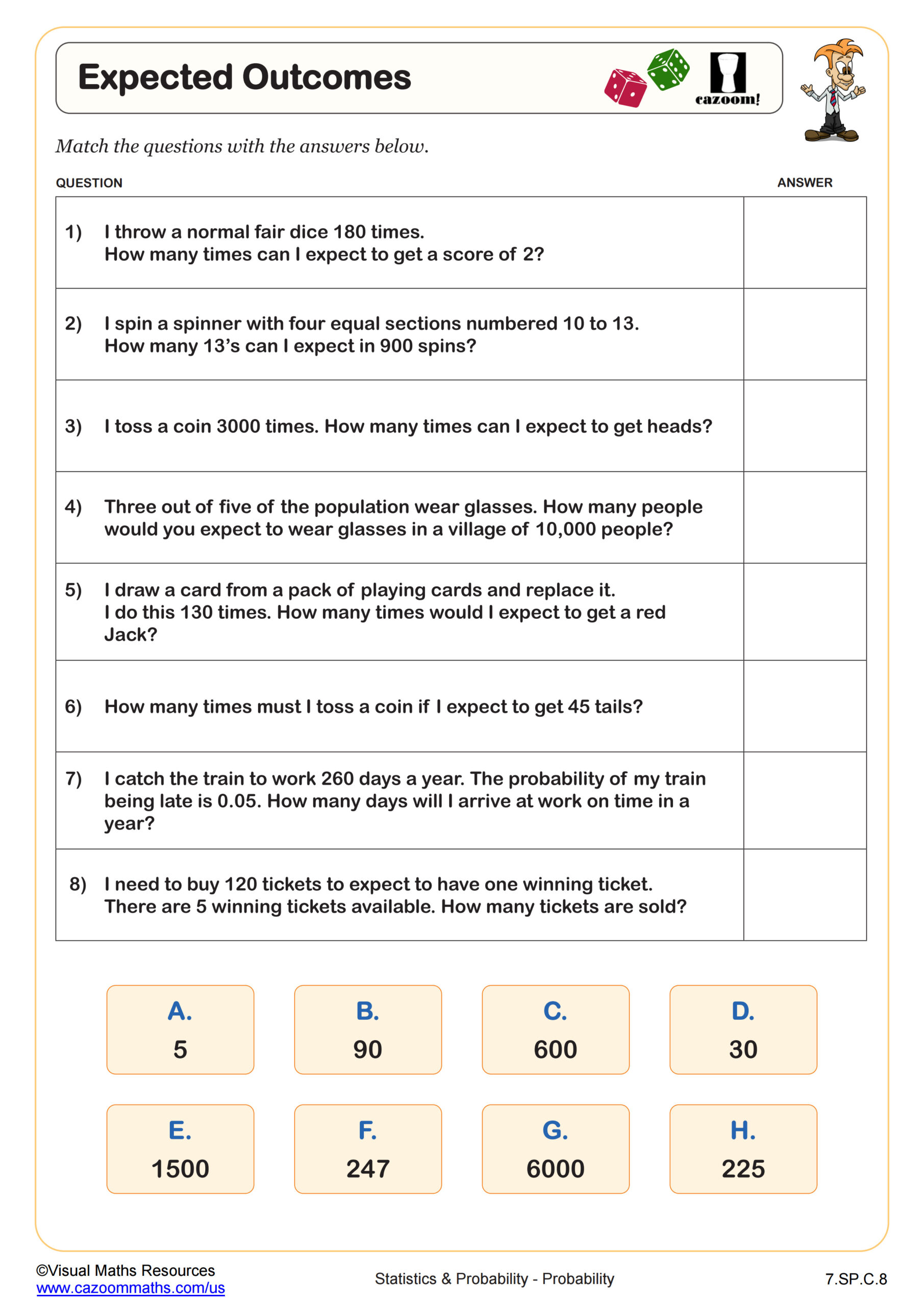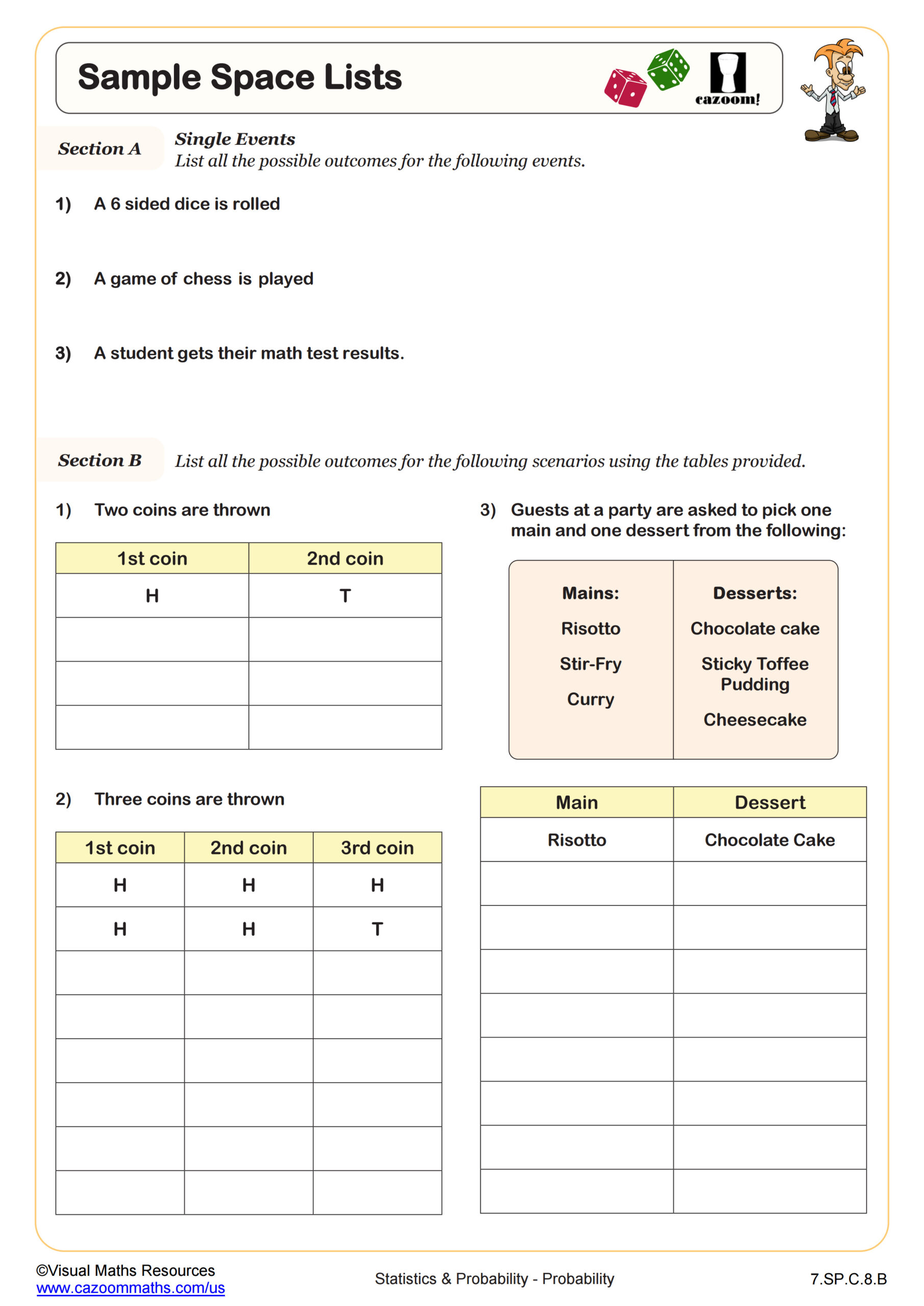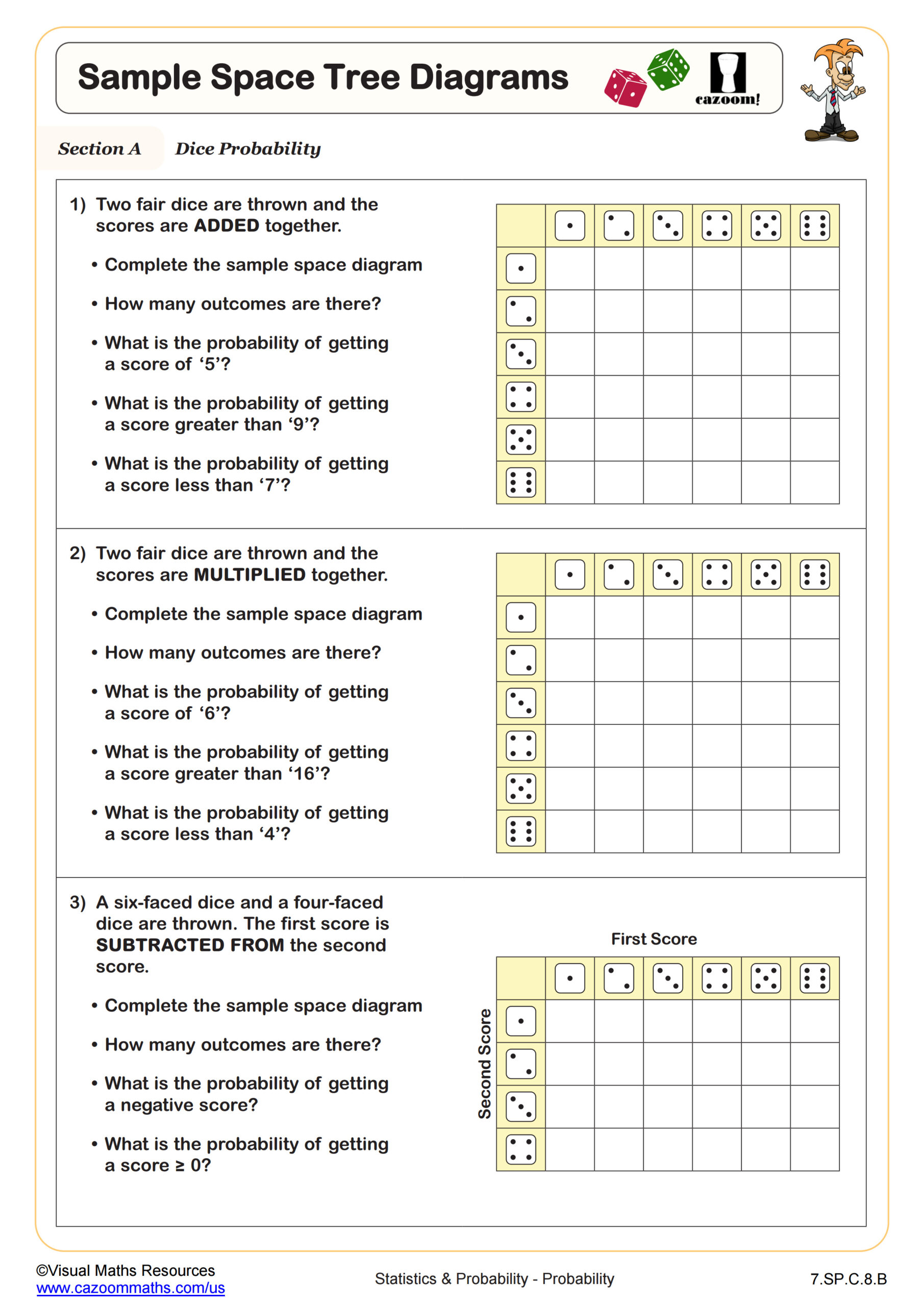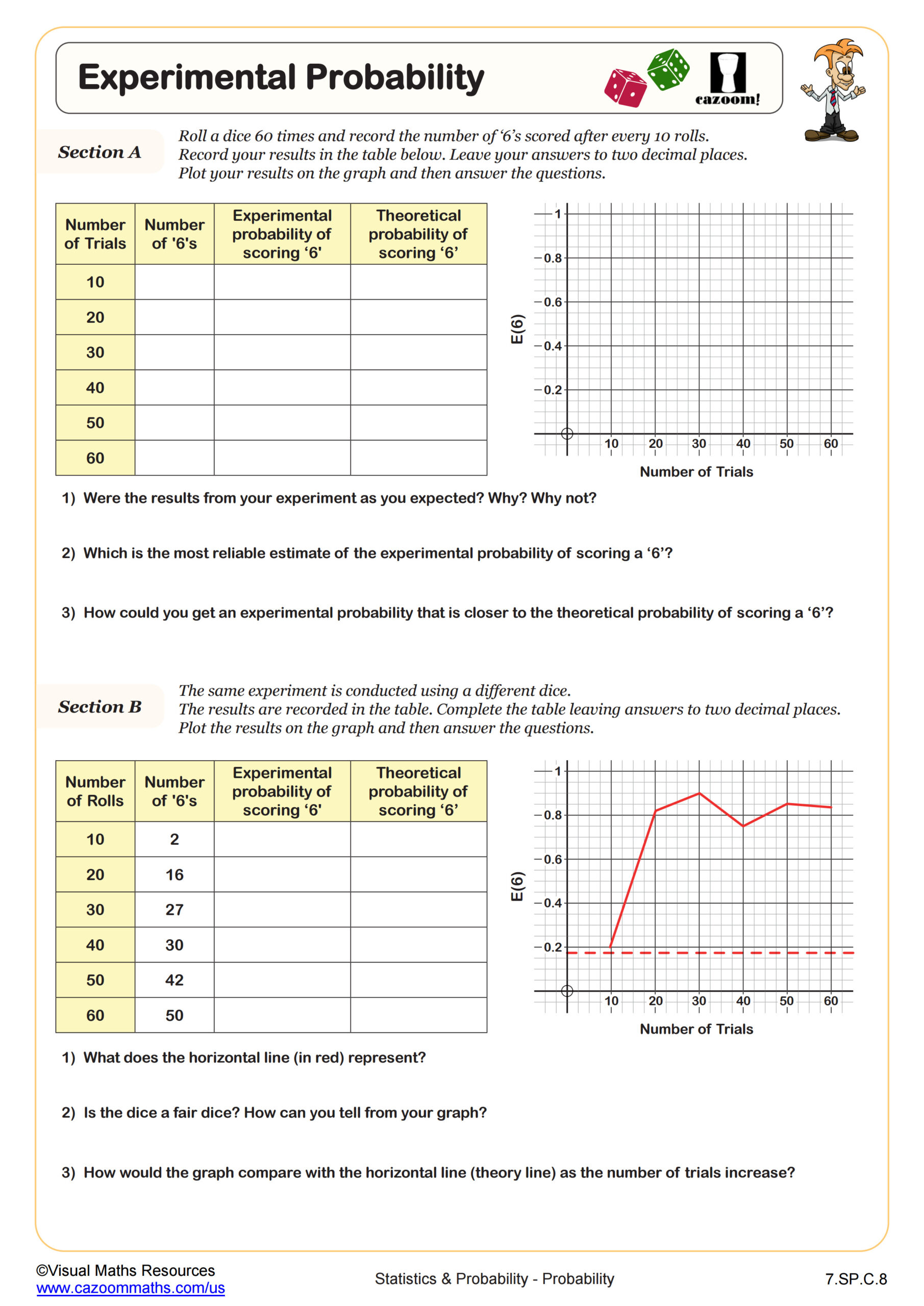Loading...
Back to:
Expected Outcomes WORKSHEET
Suitable for Grades: 7th Grade
CCSS: 7.SP.C.8
CCSS Description: Find probabilities of compound events using organized lists, tables, tree diagrams, and simulation. a. Understand that, just as with simple events, the probability of a compound event is the fraction of outcomes in the sample space for which the compound event occurs. b. Represent sample spaces for compound events using methods such as organized lists, tables and tree diagrams. For an event described in everyday language (e.g., “rolling double sixes”), identify the outcomes in the sample space which compose the event. c. Design and use a simulation to generate frequencies for compound events. For example, use random digits as a simulation tool to approximate the answer to the question: If 40% of donors have type A blood, what is the probability that it will take at least 4 donors to find one with type A blood?
Expected Outcomes WORKSHEET DESCRIPTION
Students will calculate expected frequencies using theoretical probability to complete this worksheet. Students will have to calculate the theoretical probability where it is not given. Probabilities are given as fractions, and in one case, as a decimal.
The worksheet consists of eight questions and eight answers that students will match. Questions include “Three out of five of the population wear glasses. How many people would you expect to wear glasses in a village of 10,000 people?” and “I catch the train to work 260 days a year. The probability of my train being late is 0.05. How many days will I arrive at work on time in a year?” Students will also use an expected frequency to calculate how many times an event must have occurred.




